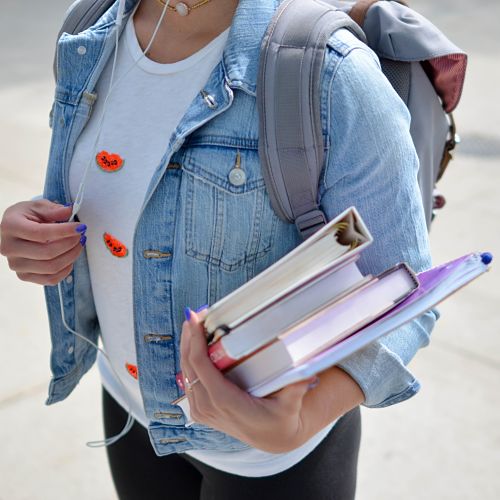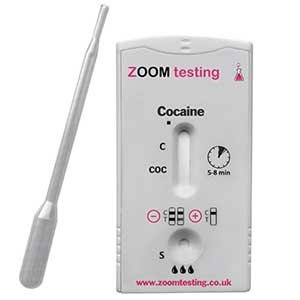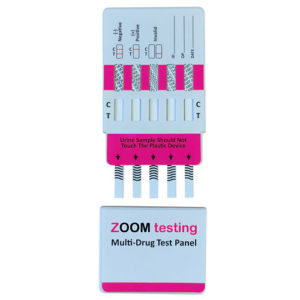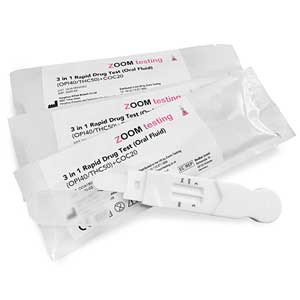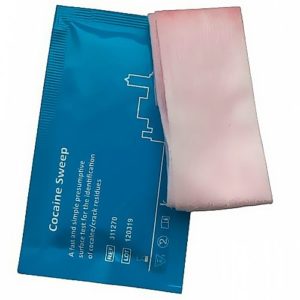In the United States, a Catholic high school in Ohio recently sent a letter to parents advising that all students will be tested for drugs and nicotine on an annual basis, commencing January 2020. This follows the results of a study just released showing that more than 37% of school districts in the United States are already operating drug testing policies.
One expert advised that it’s not yet clear whether these policies have resulted in lower rates of substance abuse. Administrators at the Ohio High School advised parents that this program has been shaped in conjunction with the Archdiocese of Cincinnati for over a period of two years. The plan is to test students at least once a year for alcohol, illicit drugs, nicotine, and other banned substances, with the letter being very clear that there will be no maximum placed on the number of times a student might be tested.
Growing Concern for the Welfare of Students
It’s very clear that education professionals are becoming increasingly concerned at the growing trend of students being taken out of school for either taking or selling illegal drugs. According to the letter, the administrators are hoping that drug testing will encourage students not to take drugs, adding that the community of Ohio is not immune to the issue of drug taking in young people and that this problem has a staggering impact on students, their families, and the community as a whole.
With teenage drug and drinking offences rising in the UK, 40 school children are excluded from school every day. In the school year 2016-2017, more than 7,700 children were excluded from mainstream schools in England. That’s 40 exclusions every day, which is an increase of 15% on the previous school year. In fact, in the past five years, there has been an increase of 57% in alcohol and drug-related exclusions in high schools. What’s frightening is that the conviction rate for 15-year-olds selling drugs has almost doubled. Many children start using drugs as young as 11, and by the time they turn 16 almost one in 10 students (girls and boys) has become a regular drug taker. This includes using cocaine and heroin. These figures indicate that approximately 400,000 under 16-year-olds across the country are now regular drug users.
Drug Culture Exerting Pressure on Students
Educators are extremely worried about the grip this culture exerts on young people in the UK, and indeed worldwide. It seems that the most heavily used drug by high school students is cannabis, but worrying new evidence reveals that even very young students are trying and using the hardest of drugs. Cannabis used to be regarded as just part of a rebellious minority, but those days are long gone. Today, cannabis stands hand-in-hand with drugs like ecstasy, which have become a necessary entertainment aid for many young people.
Drugtaking Has Become Just Part of Growing up
Today, many teenagers regard drugs as just a fundamental part of growing up, an integral part of their dance and music culture. And with the falling price of drugs, a number of drugs are now within reach of many students, and those who can’t afford to buy drugs simply turn to crime. The charity Drugscope recently determined that teenage heroin addicts in regional areas are spending on average £10,000 a year, money largely raised from stealing cars, shoplifting, theft, burglary, and street robbery. Evidence also showed that when young children become accustomed to alcohol, it’s these same children who are most likely to move on to drugtaking.
Students at the Badin High School in Ohio will now be asked to consent to drug testing as a condition of school enrolment. Any student who violates the school’s drug policy may be subjected to suspension or expulsion. The new guidelines indicate that disciplinary action may not necessarily be taken on a student’s first positive drug test, provided no other policy violations occur. This includes possession of drugs and/or intoxication during school hours. However, after a second positive test a comprehensive intervention plan would be enacted, with expulsion recommended after the third offence. According to the Administration, the police would be notified of any student selling contraband.
Do Schools Have the Right to Implement Drug Testing Policies?
This move by the Badin High School has sparked debate over whether public and/or private schools have the right to conduct drug and alcohol testing on students. The letter to parents advised that, while students were on school property or attending a school-related activity, they must understand that attendance at Badin is a privilege, not a right, and that they and their parents/guardians must act in a way that supports the safety, health, and well-being of all students.
A third party will be used to test students under the care of Badin High School. All controlled substances, nicotine, alcohol, and other unsafe substances and paraphernalia will be tested for, and drug-sniffing dogs will also be used to ensure the safety of all students in a drug-free environment. Vaping products are also considered by the administration to be illegal and are therefore in violation of school policy. Should a student or parent refuse mandatory testing, this will be considered a positive result.
It Is up to Individual Schools
Acting as spokesperson for Baden High School, Jennifer Schack said it’s up to individual school administrations and school boards to decide if they choose to enact a drug testing policy, adding that these policies were made at the local level. David Bloomfield is a professor at Brooklyn College, and he believes that schools are largely within their rights to enact this type of policy. However, legal problems may arise if the school is deemed to be disproportionally testing one group of students over another group. He added that reasonable suspicion is the typical public-school standard for a search, whereas in this instance it would simply be suspicion. There may not be a tangible basis, it could be just a hunch or a whim. He is also concerned that this policy could affect marginalized students, whereby discriminatory enforcement could present a legal problem.
The age-old question of whether schools can legally test students for drugs goes right back to before the year 2002, which was the year the United States Supreme Court supported random drug testing of students in public schools. An earlier ruling had approved drug testing for student athletes. This case involved an Oklahoma school district where students who were involved in ‘competitive’ extracurricular activities, like the choir, cheerleading, and the future homemakers club, were required to undergo random drug testing. The judge in this case, Justice Clarence Thomas, said he believed that it was entirely reasonable that the District enforced a drug testing program due to the ‘nationwide epidemic of drug use’ in school-aged children.
No Clear Indication of Reduced Substance-Abuse Rates
Professor Cindy Huang from Columbia University said in an interview that there appears to be an increase in similar drug testing programs across the country. However, research on whether drug testing actually benefits students is mixed, Professor Huang said. She said that, to date, there has been no clear indication that mandatory drug testing leads to reduced substance abuse rates.
She believes that parents should not be concerned if a drug testing policy is implemented by their school, provided it is properly planned. When well thought out and implemented, it may have the potential to act as a preventative. Professor Huang said that parents must be proactive and ask specific questions about what the consequences are should a child test positive; whether drug testing will truly be ‘at random’ and not in such a way that specific children are targeted, and whether additional programs will be added to the curriculum to promote awareness of substance abuse.
Badin High School’s Concern About Student Wellness
In 2013 the National Institute of Drug Abuse conducted a study which revealed that lower marijuana usage was reported in schools that had implemented a drug testing program; however, higher usage of other illegal drugs by students was reported. The response from Badin High School is that their administration and staff have decided to focus on student wellness for the 2019-2020 school year, believing that being proactive on drug testing is in the best interests of their students and is the appropriate action for their administration to take. For this school Administration, the implementation of a drug testing policy is tied to their overall concern for the safety, health, and wellness of their students.
Random Drug Testing in Schools
It is unclear as to which type of testing will be employed at the high school for random drug testing of students. Often workplace drug testing is performed using a urine drug testing kit that will show evidence of recent drug use. A five panel drug testing kit is often used by schools as it will screen for five of the most common drugs of abuse including cannabis, cocaine and amphetamines.
Saliva drug testing is also used by employers and schools to show if an individual is currently under the influence of banned drugs. One of the advantages of saliva drug testing is that it is less invasive and easier to administer than urine drug testing. The downside of this type of testing is that the window of detection is much smaller than that of a urine drug test.
Saliva drug tests can check for a small number of drugs, such as those on the Zoom Testing 4 panel saliva drug test, or a large number of drugs. The most comprehensive test of this type is the 13 panel saliva drug test.
Often a 7 panel saliva drug test is used by schools and employers as it will check for all the commonly used drugs of abuse.
Zoom Testing is a leading supplier of Drug Test Kits.

